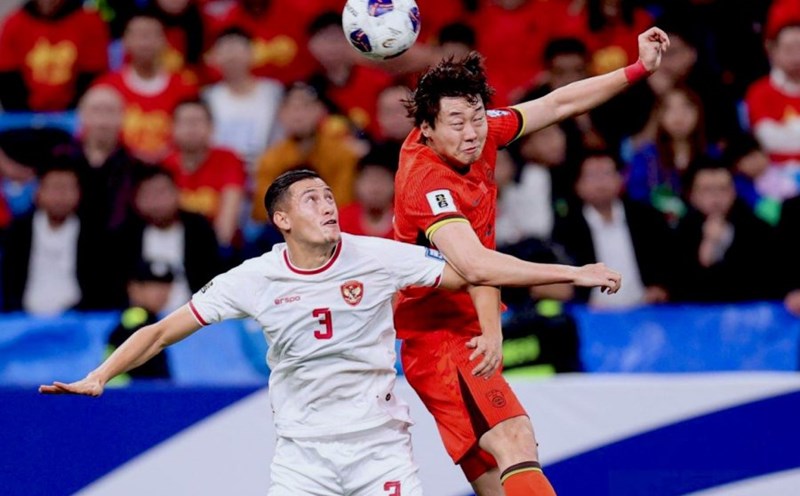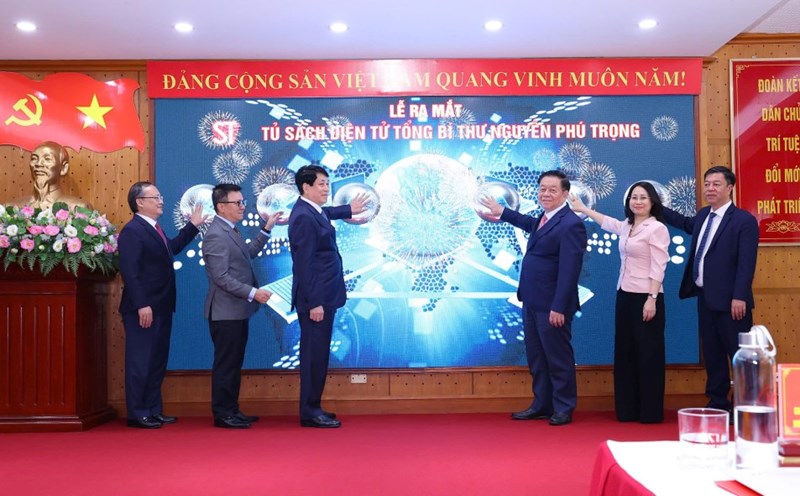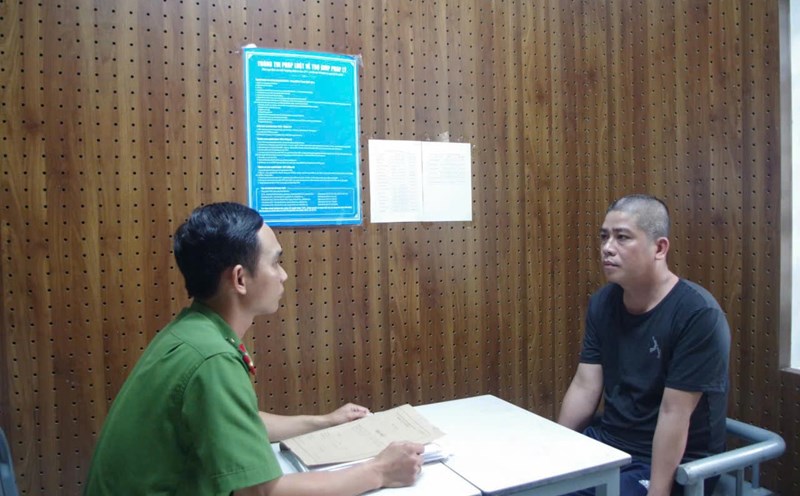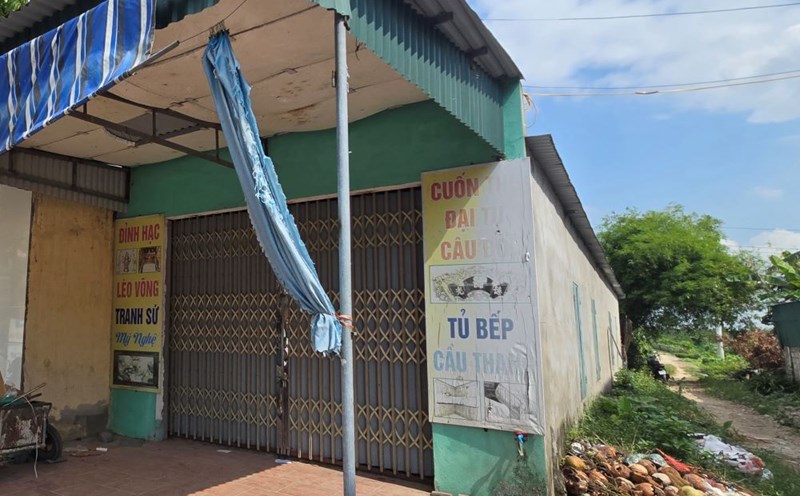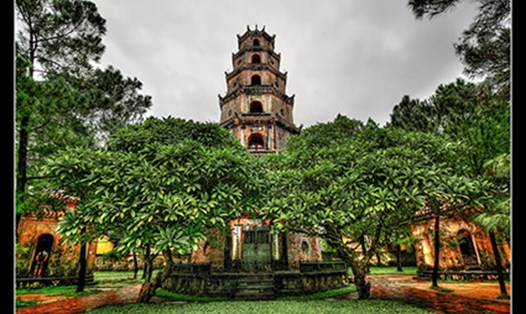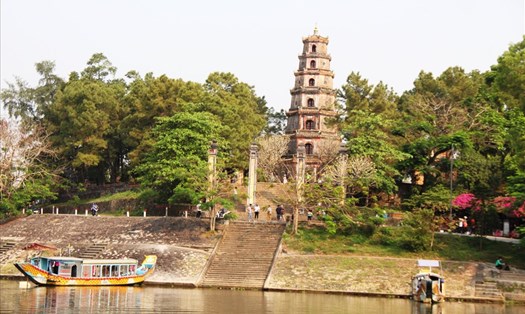Lord Nguyen is a devout Buddhist
Thien Mu Pagoda was built in 1601 under Lord Nguyen Hoang. According to legend, Lord Nguyen Hoang once went on a patrol and came to Ha Khe hill on the banks of the Perfume River. Here, he heard about an old woman wearing a red shirt and blue pants appearing and saying that there would be a lord here who would come and build a pagoda to pray for peace in the country and people. Believing in this good omen, Lord Nguyen Hoang decided to build Thien Mu Pagoda on Ha Khe hill.
Later, Lord Nguyen Phuc Chu (1675 - 1725), although coming from a Confucian lineage, loved Buddhism very much and gave himself the religious name Thien Tung Taoist. He had great contributions in expanding his territory to the South and developing Buddhism since his succession in 1691. Lord Nguyen Phuc Chu invited Venerable Thach Liem (Thich Dai San) from China to organize ordination and teachings. monk and he himself was given the Bodhisattva precepts by Venerable Thach Liem, and was given the title of the three-tenth world main sect of Cao Dong, the dharma name Hung Long. Lord Nguyen Phuc Chu not only holds royal power but is also the 30th generation heir of the Soto sect.
Thien Mu pagoda's great red bell was cast in 1710 to make offerings to Buddha. The inscriptions on the bell say: "The lord of Dai Viet country is Nguyen Phuc Chu, the 30th generation descendant of the main Taoist sect, dharma name Hung Long, cast in a red bell weighing 3,285 kg, entered into Thien Mu Zen pagoda by God." built to permanently worship the Three Jewels.
The bell weighs 3,285 pounds (more than 2,000kg), is 2.5m high, has a mouth diameter of 1.4m, has a balanced shape, and the patterns and motifs on the bell body are delicately and sharply carved. This is one of the largest and most famous bells in Vietnam. Dai Hong Chung is an important dharma weapon, carrying many symbolic meanings of all three major streams of East Asian thought: Buddhism, Confucianism and Taoism, expressing the wish for good weather and a peaceful country. The people are peaceful and full of Buddhist wisdom. This bell is considered a typical work of decorative art, demonstrating the sophistication in bronze casting techniques of the Nguyen Lords .
In the ancient capital, the echo of the bell of Thien Mu Pagoda is like a reminder and aspiration of the people in the process of expanding their territory to the South, helping Thien Mu National Pagoda increasingly attract a large number of Buddhists. . The attachment between the temple and the community also creates conditions for the court to get closer to the people, build trust and receive support, thereby contributing to the stability of the country. With that important role, Dai Hong Chung of Thien Mu Pagoda has become a symbol of connection between Buddhism, political power and traditional moral ideology, creating a dominant ideology for contemporary society.
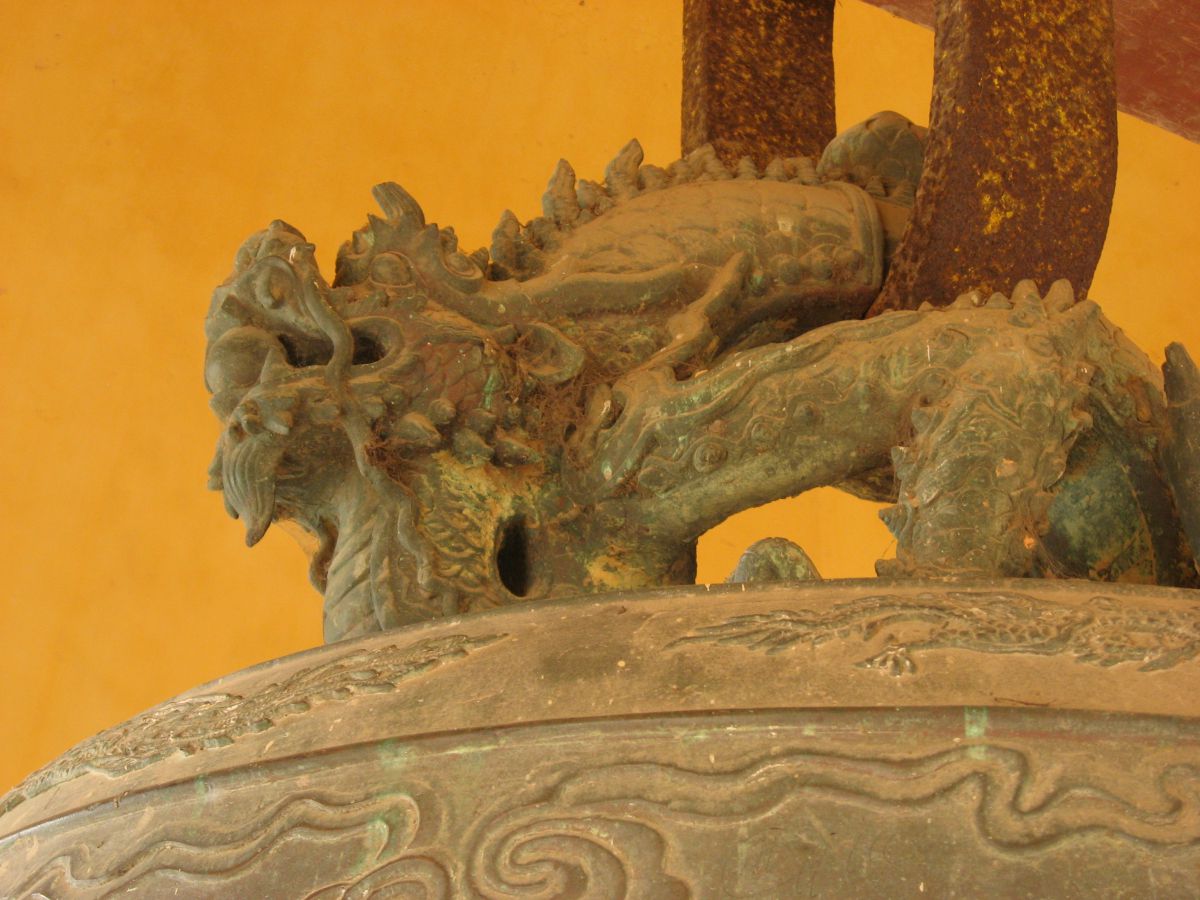
Today, Venerable Thich Minh Chau in the book "Dharma and Happiness", "Vietnamese Pagodas and their relationship with national culture" commented that: "The bell of Thien Mu Pagoda symbolizes the presence of Buddhism every day, morning and afternoon in the ancient capital of Hue, in the hearts of every citizen in the ancient capital of Hue."
Dai Hong Chung Thien Mu Pagoda is not only a symbol of Buddhism but also a cultural symbol of the people of Hue. It carries the symbolic meaning of all three major streams of Asian thought: Buddhism, Confucianism and Taoism, expressing the wish for peace and prosperity.
The pinnacle of bronze casting art during the Nguyen Dynasty
If divided by horizontal layout, Dai Hong Chung is divided into three parts: bell handle, bell body and bell mouth. The handle of the bell shows the shape of a pigeon with two heads turned to both sides, the four front legs of the pigeon attached to the top of the bell. On the body of the Bo Lao is a lotus flower, and the four front legs of two pythons are placed on top of the bell.
The bell body is divided into four regular parts by four straight wave bands divided in four directions (East - West - South - North), with six parts having different patterns and letters. The bell body has many patterns and motifs representing the spirit of Eastern philosophy with four alternating dragon and four phoenix images. Dragon and phoenix patterns are always in a moving position, the dragon and phoenix symbol is also considered the harmony of yin and yang. The bottom part of the bell body has a small border with a beaded line running around the circumference of the bell's mouth. From the beaded line, flaring out is the bell's mouth decorated with a three-water pattern. This water wave pattern is depicted in four layers of large waves, three layers of small waves carved meticulously, of different sizes, creating a non-stop movement that runs evenly around the bell according to the frill decoration. The water wave carving here is depicted in a realistic way, not as harsh and abstract as in some other bells.
One of the unique features that few bells have is the embossed image of the Eight Treasures on the bell body. In the middle of these eight precious objects, there is a strip of iron wrapped horizontally in the middle and winding at both ends. This is a very classic conventional decoration maintained in previous centuries on different materials such as wood, porcelain... This set of precious bowls is a combination of the Buddhist bowls and precious bowls. of Taoism.
According to L. Cadière in the research article "An Nam art motifs", the Taoist eight treasures include: Fan, sword, gourd, pair of bells, flower basket, bamboo tube and whip, flute, flower lotus. On the Dai Hong Chung of Thien Mu Pagoda, there are no images of flower baskets, bamboo pipes, whips, or lotus flowers. Instead, there are flutes, lanterns, and brush pens, which are symbols in the Buddhist eight treasures.
The decorative motifs on this Dai Hong Chung demonstrate the synthesis and harmony of all three major streams of Asian thought: Buddhism, Confucianism and Taoism. Vietnamese Buddhism has not separated its beliefs from the daily lives of its people, wishing for "peace and prosperity in the country and people", that is, praying for peace and stability in the country, good weather and good weather for the seasons. Lush membranes, prosperous and prosperous life. The patterns and motifs depicted in Dai Hong Chung of Thien Mu Pagoda demonstrate Vietnamese philosophy, which is a philosophy of tolerance, non-discrimination, and non-self-acceptance. This great common is the only place in Thien Mu Pagoda where Lord Nguyen Phuc Chu engraved four words: "Thien Mu Zen Tu".
The Great Hong Chung at Thien Mu Pagoda is a unique work of sculpture, painting and bronze casting industry during the Nguyen Lords. Along with stele and stone turtle, Dai Hong Chung is one of the treasures of Thien Mu Pagoda and also a treasure in the treasury of Vietnamese Cultural Heritage.




